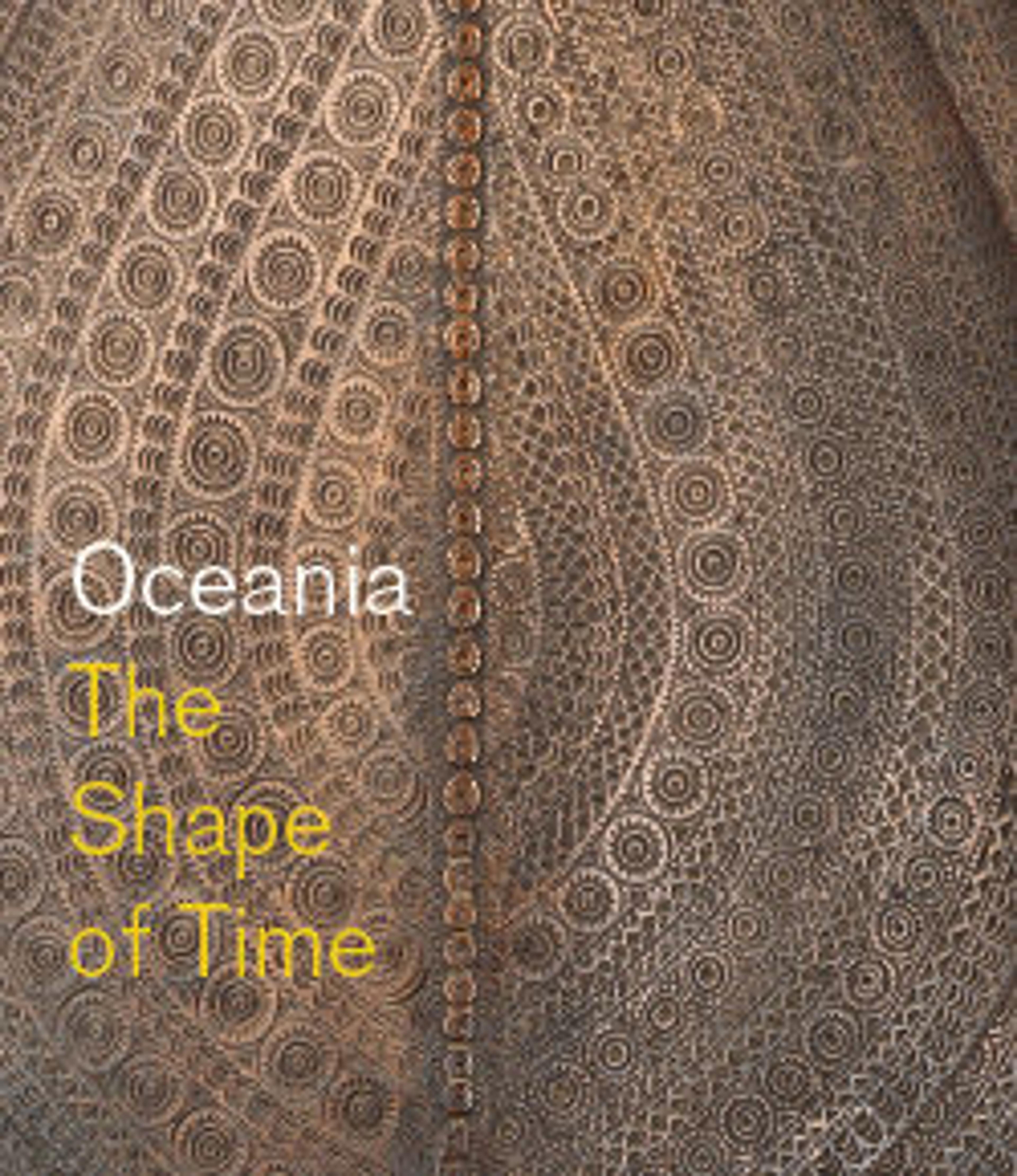Ceremonial Staff (Wari Hau)
Solomon Islands is home to a huge diversity of adornments and ceremonial weapons designed to communicate the status and prowess of their bearers. Ceremonial batons from Malaita, known as wari hau (literally, round stone) for the shape of their heads, were carved from iron pyrite and completed with a finely woven covering for the head of the baton and nautilus shell inlay on the handle.
Early explorers to Solomon Islands mistook wari hau for clubs, but this work is not a weapon. The batons would be worn by warriors as insignia, suspended from a cord around the neck so that they would hang down the back. Wari hau could only be worn by men who were authorized to claim payment for an execution, a fact that played into the European imagination and preconceptions of the Pacific. The batons were seen as highly desirable by European collectors who termed them assassin’s batons. In response, Solomon Islanders began making works for trade with European ships.
It is said that wari hau played an important role in the naming of Solomon Islands. When Spanish explorer Álvaro de Mendaña arrived in the islands in 1568, his crew were so captivated by the shimmering iron pyrite used to make the spherical head of the clubs that they thought they had found islands rich in gold. While not made from gold, shimmer is an important quality of wari hau. Nautilus shell inlay against stained black wood or parinarium nut paste is a distinctive feature of Solomon Islands art, where the luminous quality of the shell creates visual efficacy and signifies ancestral presence.
Early explorers to Solomon Islands mistook wari hau for clubs, but this work is not a weapon. The batons would be worn by warriors as insignia, suspended from a cord around the neck so that they would hang down the back. Wari hau could only be worn by men who were authorized to claim payment for an execution, a fact that played into the European imagination and preconceptions of the Pacific. The batons were seen as highly desirable by European collectors who termed them assassin’s batons. In response, Solomon Islanders began making works for trade with European ships.
It is said that wari hau played an important role in the naming of Solomon Islands. When Spanish explorer Álvaro de Mendaña arrived in the islands in 1568, his crew were so captivated by the shimmering iron pyrite used to make the spherical head of the clubs that they thought they had found islands rich in gold. While not made from gold, shimmer is an important quality of wari hau. Nautilus shell inlay against stained black wood or parinarium nut paste is a distinctive feature of Solomon Islands art, where the luminous quality of the shell creates visual efficacy and signifies ancestral presence.
Artwork Details
- Title:Ceremonial Staff (Wari Hau)
- Date:19th–early 20th century
- Geography:Solomon Islands
- Culture:Solomon Islands
- Medium:Wood, chambered-nautilus shell, fiber, paint
- Dimensions:H. 15 1/2 × W. 1 3/8 × D. 1 3/8 in. (39.4 × 3.5 × 3.5 cm)
- Classification:Wood-Sculpture
- Credit Line:Bequest of John B. Elliott, 1997
- Object Number:1999.47.48
- Curatorial Department: The Michael C. Rockefeller Wing
More Artwork
Research Resources
The Met provides unparalleled resources for research and welcomes an international community of students and scholars. The Met's Open Access API is where creators and researchers can connect to the The Met collection. Open Access data and public domain images are available for unrestricted commercial and noncommercial use without permission or fee.
To request images under copyright and other restrictions, please use this Image Request form.
Feedback
We continue to research and examine historical and cultural context for objects in The Met collection. If you have comments or questions about this object record, please contact us using the form below. The Museum looks forward to receiving your comments.
